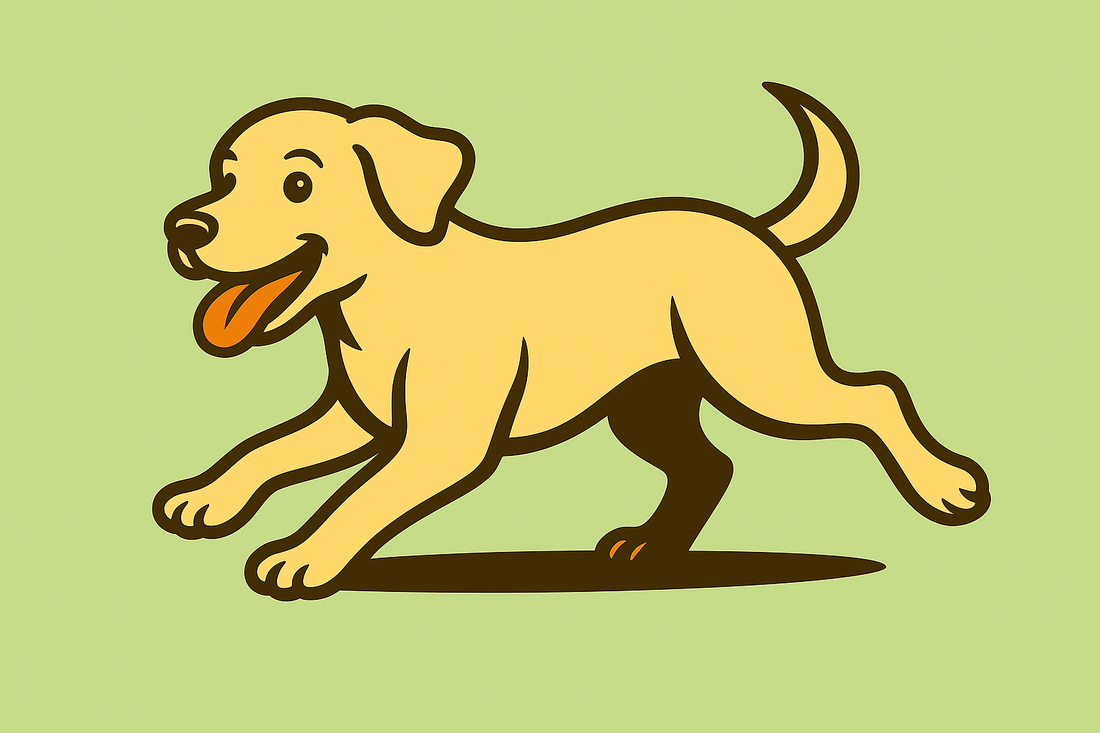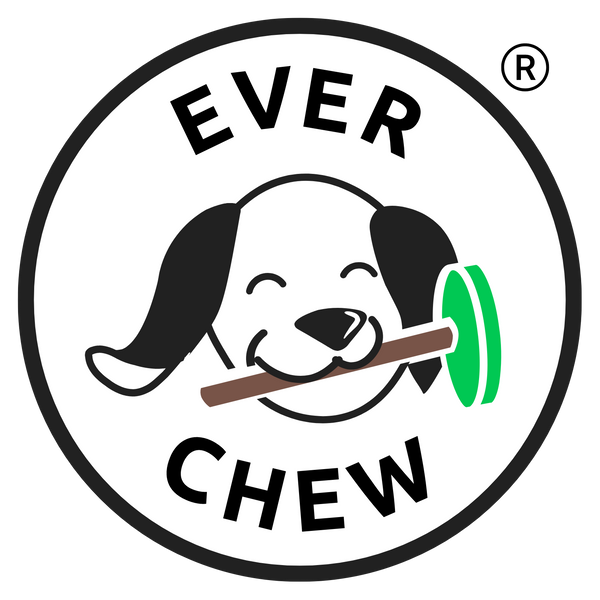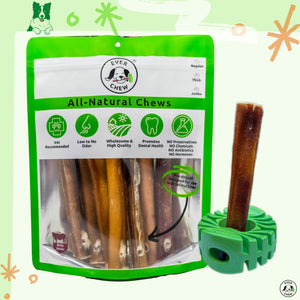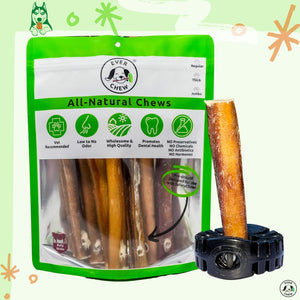Labrador Retrievers: A Guide to Chewing Bully Sticks

by Kirby Kendall (Inventor of EverChew)
Labrador Retrievers are a great family dog. They are smart and gentle, with a "soft mouth" that has made them hunting companions through the ages. But despite that softness, these dogs pack a surprisingly powerful bite that needs the right chewing solution.
Strong Jaws with Well-Balanced Bite Mechanics
Labs belong to the mesocephalic family—dogs with proportionally balanced skulls that fall right in the middle of the head shape spectrum. This square-skulled design gives them several advantages: broader snouts with larger nasal cavities (explaining their excellent scenting abilities), well-proportioned jaw mechanics, and fewer head and neck related issues compared to flat-faced breeds.
Labrador Retrievers generate approximately 230 PSI of bite force, while a puny human jaw does around 120 PSI. Their mesocephalic jaw means their teeth fit comfortably without the crowding issues that plague flat-faced breeds. They have excellent scissor-bite alignment, where upper teeth slightly overlap the lower teeth.
In short—Which EverChew Holder?
Retrievers will work best with the green plus holder if they are a puppy, an older dog, or a dog that isn't chew-tastic. But many Labs will need to use the indestructible black nylon holder.
Labs are natural, enthusiastic chewers which helps maintain dental health, provides mental stimulation, relieves stress, and exercises their powerful jaw muscles. Their retrieving heritage means they're genetically programmed to use their mouths constantly.
Puppy Phase (3-8 months): This breed experiences intense chewing during teething, with peak intensity around 3-7 months. During this period, they're not just exploring—they're actively relieving teething discomfort while their adult teeth emerge.
Adult Phase (8+ months): Most destructive chewing settles around 8-12 months, and they continue chewing throughout their lives. Labs are known as moderate to aggressive chewers, often preferring to chew with the sides of their mouths using their powerful premolars.
Understanding Bully Stick Advantages and Why a Holder is Essential
Labs are natural chewers, and this behavior serves multiple important purposes: dental health, mental stimulation, stress relief, and jaw exercise. Bully sticks are pure protein (like beef jerky) and since they're soft-hard (firm but soften while chewing), they act like a toothbrush—especially effective for the well-spaced teeth of mesocephalic breeds.
But once the bully stick is chewed into a short stub, any dog can swallow it. Many times the stub will pass through, but sometimes it can lodge in the throat or digestive tract, leading to choking or blockage (and potentially an emergency vet visit). This risk is particularly concerning for Labrador Retrievers because their strong bite force and retrieving instincts make them more likely to attempt swallowing larger pieces.
Choose the Medium Dog Plus holder if your Lab:
- Is an older Lab where the nylon-hard holder may break a tooth.
- Labs that just don't chew too hard.
- Is a teething puppy since their sharp teeth can sink into the softer green material.
Consider the Large SuperChew if your Lab:
- Weighs 40+ pounds
- Is an aggressive or determined chewer
- Has destroyed other chew holders in the past
- Shows no issues with other nylon toys
Skip the Small Dog holder for your retriever. Unless your Labrador Retriever is really gentle, they will likely tear into this holder too much.


